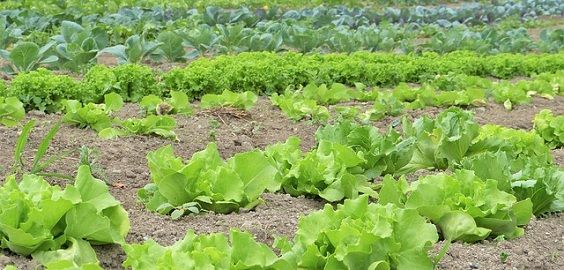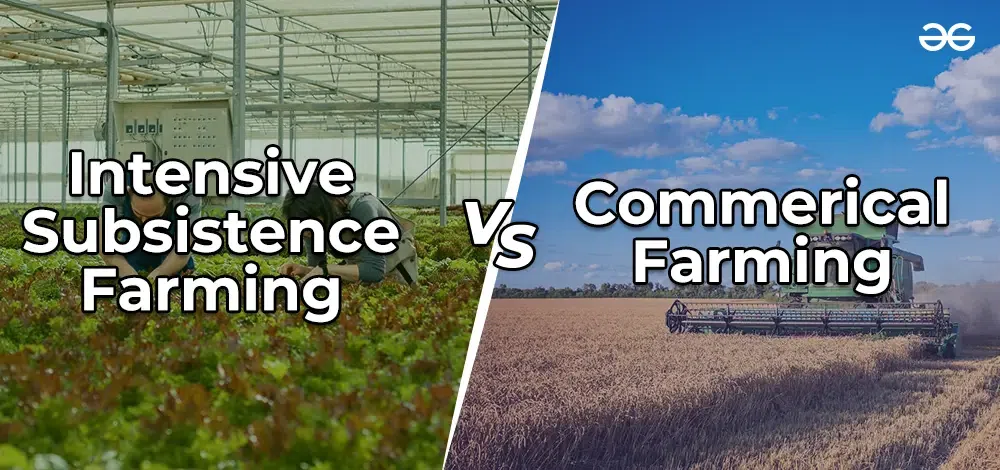Area Resilience and Its Link to Commercial Farming vs Subsistence Farming
Area Resilience and Its Link to Commercial Farming vs Subsistence Farming
Blog Article
Exploring the Distinctions Between Commercial Farming and Subsistence Farming Practices
The duality in between commercial and subsistence farming techniques is marked by varying objectives, operational ranges, and resource application, each with extensive implications for both the atmosphere and culture. On the other hand, subsistence farming emphasizes self-sufficiency, leveraging conventional techniques to sustain household requirements while supporting community bonds and social heritage.
Economic Goals
Financial purposes in farming methods usually determine the approaches and range of operations. In business farming, the key financial purpose is to optimize revenue.
In comparison, subsistence farming is mostly oriented in the direction of meeting the immediate demands of the farmer's family, with surplus manufacturing being very little - commercial farming vs subsistence farming. While business farming is profit-driven, subsistence farming is focused around sustainability and resilience, mirroring an essentially different set of financial imperatives.

Range of Workflow
The difference in between business and subsistence farming comes to be particularly obvious when taking into consideration the range of operations. The scale of business farming allows for economies of range, resulting in reduced costs per unit through mass production, raised effectiveness, and the capability to invest in technical innovations.
In raw contrast, subsistence farming is normally small-scale, concentrating on producing simply enough food to fulfill the instant demands of the farmer's family members or local community. The land location involved in subsistence farming is often minimal, with less accessibility to modern technology or mechanization.
Source Usage
Commercial farming, characterized by massive operations, usually employs innovative modern technologies and mechanization to enhance the usage of resources such as land, water, and plant foods. Accuracy farming is progressively embraced in business farming, using data analytics and satellite modern technology to check plant health and enhance source application, further improving yield and resource effectiveness.
In contrast, subsistence farming operates on a much smaller sized range, mainly to meet the prompt demands of the farmer's family. Source utilization in subsistence farming is often limited by economic restraints and a dependence on typical strategies.
Ecological Effect

Alternatively, subsistence farming, practiced on a smaller range, generally employs typical strategies that are more attuned to the surrounding environment. Plant turning, intercropping, and natural fertilizing are usual, advertising dirt health and wellness and reducing the need for synthetic inputs. While subsistence farming typically has a lower environmental impact, it is not without difficulties. Over-cultivation and inadequate land administration can bring about dirt disintegration and deforestation sometimes.
Social and Cultural Effects
Farming methods are deeply intertwined with the social and social textile find out this here of areas, affecting and reflecting their worths, practices, and financial structures. In subsistence farming, the emphasis gets on cultivating sufficient food to satisfy the prompt requirements of the farmer's family members, frequently fostering a solid feeling of area and shared obligation. Such techniques are deeply rooted in local traditions, with knowledge gave through generations, therefore maintaining social heritage and reinforcing communal ties.
Conversely, industrial farming is mainly driven by market demands and success, often leading to a shift in the direction of monocultures and large-scale procedures. This method can result in the disintegration of conventional farming techniques and cultural identifications, as neighborhood customizeds and expertise are replaced by standard, commercial approaches. Moreover, the focus on effectiveness and earnings can often decrease the social communication discovered in subsistence communities, as financial deals change community-based exchanges.
The dichotomy between these farming methods highlights the broader social ramifications of agricultural selections. While subsistence click to find out more farming supports cultural continuity and community connection, business farming straightens with globalization and financial growth, often at the expense of traditional social structures and cultural diversity. commercial farming vs subsistence farming. Balancing these facets stays a crucial obstacle for lasting agricultural development
Final Thought
The exam of commercial and subsistence farming techniques exposes substantial differences in purposes, scale, source use, ecological effect, and social effects. Industrial farming prioritizes revenue and performance with massive procedures and progressed technologies, typically at the price of environmental sustainability. Conversely, subsistence farming highlights self-sufficiency, making use of conventional methods and regional resources, therefore advertising social conservation and area communication. These contrasting methods emphasize the complicated interaction between financial development and the demand for socially inclusive and eco sustainable farming methods.
The dichotomy in between commercial and subsistence farming techniques is marked by varying goals, functional scales, and resource utilization, each with extensive ramifications for both the setting and culture. While commercial farming is profit-driven, subsistence farming is focused around sustainability and strength, mirroring a fundamentally different set of economic imperatives.
The distinction between industrial and subsistence farming becomes particularly apparent when taking into consideration the range of procedures. While subsistence farming sustains cultural continuity and community interdependence, industrial farming lines up with globalization and financial development, commonly at the price of typical social frameworks and social diversity.The assessment of industrial and subsistence farming techniques reveals considerable differences helpful site in objectives, range, resource use, environmental influence, and social implications.
Report this page